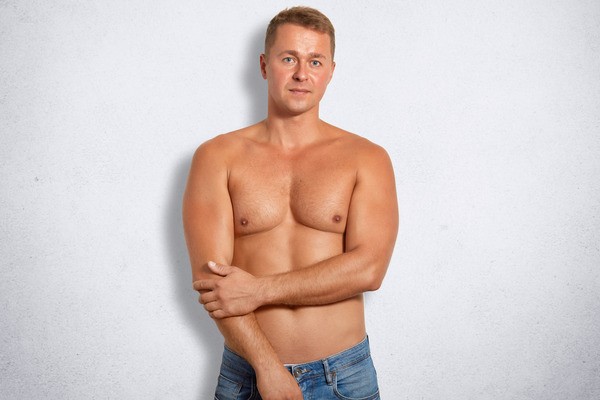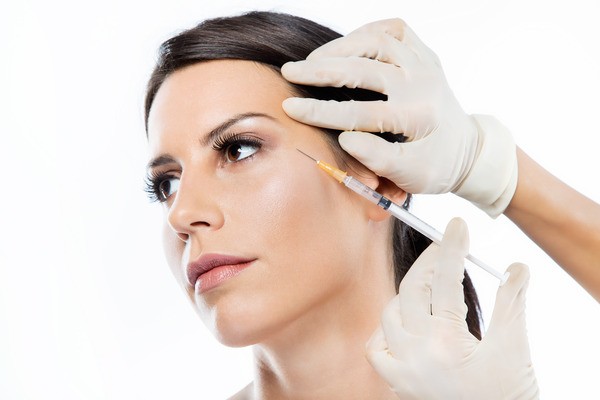
Busting Myths Around Gynecomastia And What Every Man Needs To Know
Have you ever felt self-conscious about your chest while everyone else was enjoying a social gathering? You may have Googled it in secret and felt confused by the misinformation. You’re not alone in this and more importantly, you’re not to blame. Though it is common and treatable, Myths about Gynecomastia often prevents individuals from seeking appropriate medical help.
In this article, we’re busting the myths, the misconceptions, and the silence that surrounds gynecomastia. Whether you're struggling to understand what’s happening with your body or feeling lost about what to do next, this is for you.
What Is Gynecomastia And What It’s Not?
Gynecomastia is a condition where men develop swollen or enlarged breast tissue caused by a hormonal imbalance. Where there’s too much estrogen (a hormone usually higher in women) and not enough testosterone. This can happen during puberty, with certain medications, steroid use, health issues, or even aging.
Some men have a bigger chest just because of extra fat, especially if they’re overweight. This is called pseudogynecomastia. It’s not caused by hormones. There’s no glandular growth, just fat buildup in the chest area. It may look similar, but it’s not the same thing.
Most Common Myths Around Gynecomestia
1) Myth: Gynecomastia is caused by being overweight.
While weight gain can lead to a larger chest, that condition is called pseudogynecomastia, which is due to fat buildup. True gynecomastia is caused by an imbalance in hormones, specifically an increase in estrogen or a decrease in testosterone. Even men who are fit or lean can develop gynecomastia. Confusing the two often delays proper diagnosis and treatment.
2) Myth: Only teenagers get gynecomastia.
Though common during puberty due to hormonal fluctuations, gynecomastia can occur at any age - including in infants, adults, and older men. In adults, it may be linked to medication, lifestyle, or underlying health issues. It doesn’t always go away with age, and it’s not something only teenagers experience.
3) Myth: Gynecomastia goes away on its own.
In puberty-related cases, mild gynecomastia may go away naturally over time - usually within 6 months to 2 years. However, if the condition persists beyond this period or develops in adulthood, it typically does not resolve without treatment. Waiting too long may limit treatment options or lead to emotional stress.
4) Myth: Exercise and diet can cure gynecomastia.
While a healthy lifestyle is always beneficial, exercise and diet cannot reduce glandular breast tissue, which is what defines gynecomastia. Weight loss may reduce fat around the chest, but the underlying hormonal issue and glandular tissue remain. This is why many men find that no matter how hard they train, the chest doesn’t change.
5) Myth: Only bodybuilders or steroid users get gynecomastia.
Yes, anabolic steroids and certain performance-enhancing drugs can trigger gynecomastia by disturbing hormone levels. However, they are not the only cause. Many men who have never used steroids also develop gynecomastia due to natural hormonal changes, certain medications, alcohol use, or medical conditions like liver or kidney disease.
6) Myth: Gynecomastia is dangerous or a sign of cancer.
Gynecomastia itself is not life-threatening and is usually benign (non-cancerous). While breast cancer in men is rare, it’s still important to get any chest changes evaluated by a doctor. A physical exam or imaging can clearly differentiate between gynecomastia and other conditions.
7) Myth: Gynecomastia only affects appearance, not mental health.
This is one of the most overlooked aspects. Gynecomastia can deeply affect a person’s self-esteem, confidence, and mental well-being. Many men suffer in silence, avoiding social situations, intimacy, or activities like swimming or going to the gym. Addressing gynecomastia isn’t just about appearance - it’s also about restoring emotional health.
8) Myth: Surgery is the only solution.
While surgery (gynecomastia correction or gland removal) is the most effective option for moderate to severe or long-standing cases, it’s not the only approach. For some men, treating the underlying hormonal cause, changing medications, or addressing lifestyle triggers may reduce symptoms. An experienced doctor can guide you through the best options based on your case.
9) Myth: It’s embarrassing to talk to a doctor about gynecomastia.
Gynecomastia is a medical condition, not a personal flaw or weakness. Doctors are trained to handle such issues with professionalism and care. Seeking help early can save you from years of discomfort, confusion, or trying ineffective solutions. It’s far more common than you think - and no question is too small to ask.
10) Myth: Gynecomastia is rare.
It’s actually very common. Studies show that up to 60–70% of adolescent boys experience some form of gynecomastia during puberty. In adult men, around 30–40% may be affected to varying degrees. The condition is often underreported due to shame or misunderstanding, which leads to the illusion of rarity.
How To Unlearn The Myths And Reclaim Your Confidence?
Start by questioning everything you've been told - was it based on facts or fear? Read trusted health resources, talk to qualified doctors. Don’t let unrealistic body standards from social media or movies shape how you see yourself. Your body is not broken - it’s just misunderstood. The more you educate yourself, the more power you take back.
If gynecomastia is affecting your self-esteem or interfering with how you live your life, don’t carry the weight alone. Talking to a qualified medical professional can help you understand exactly what’s going on with your body and what can be done about it.
Dr. Rathore and his team take a compassionate and personalized approach, he will evaluate your medical history, lifestyle, and your personal concerns. Based on your health condition and expectations, Dr. Rathore will recommend the most suitable and effective procedure tailored just for you.
Read More: Gynecomastia Surgery In Kolkata— Reduce Your Male Breast Fat







